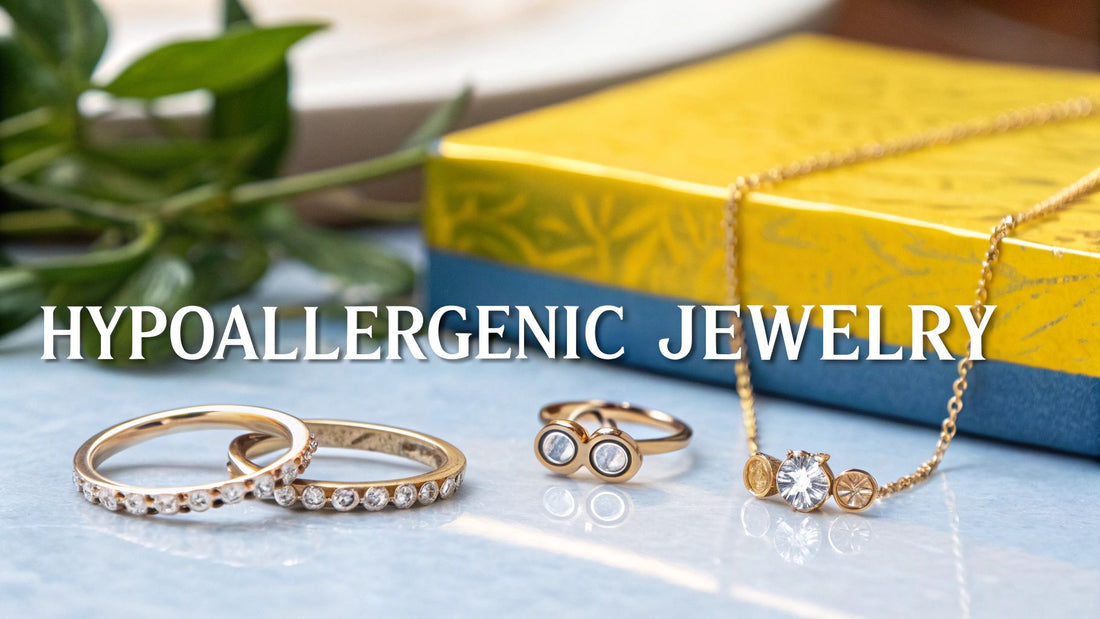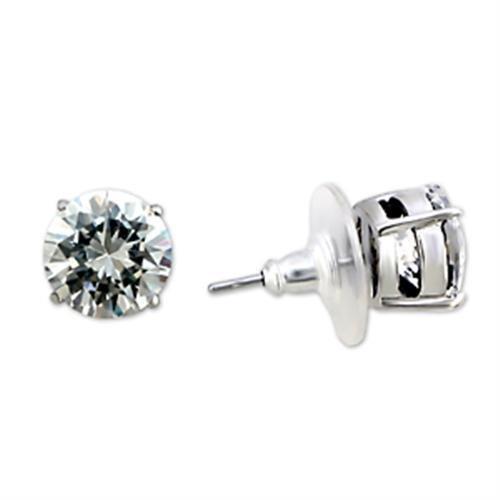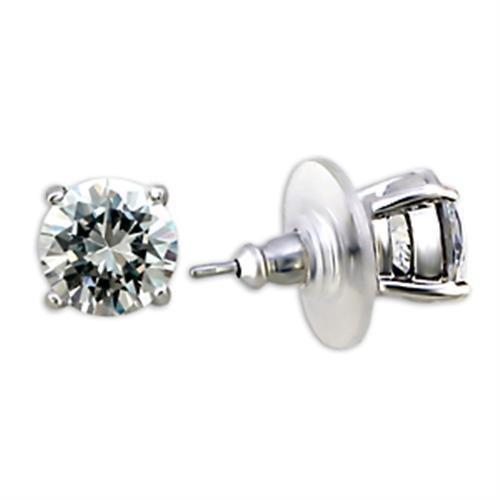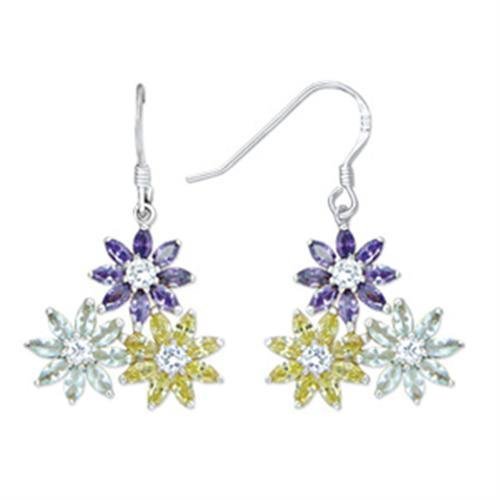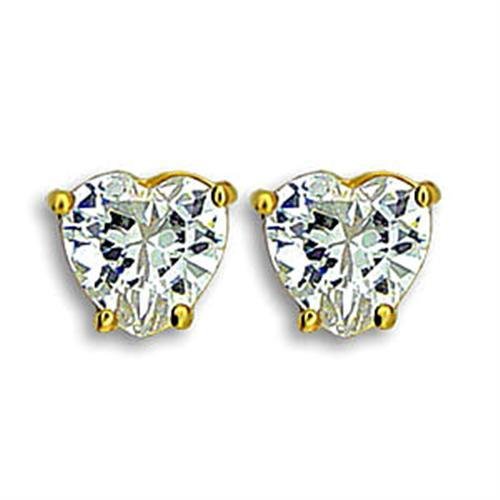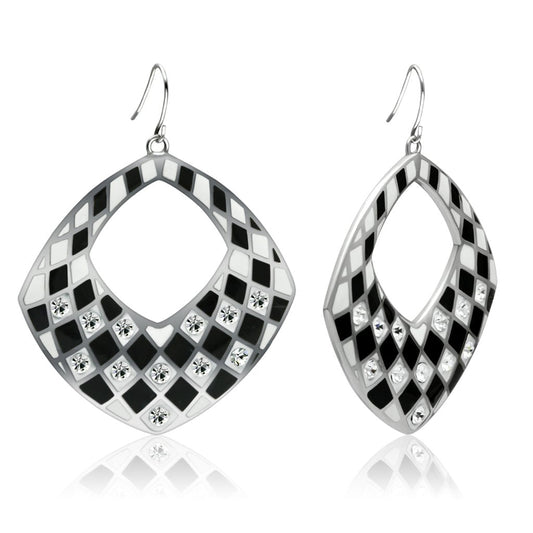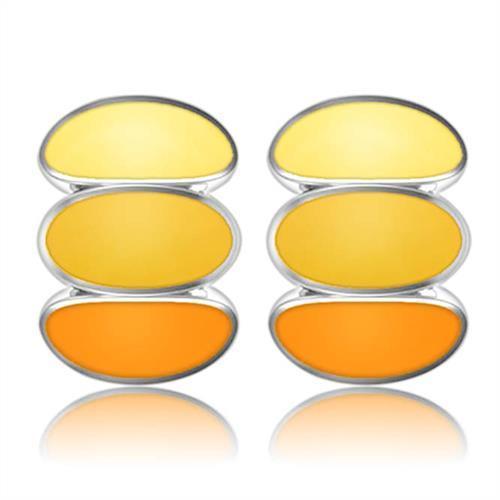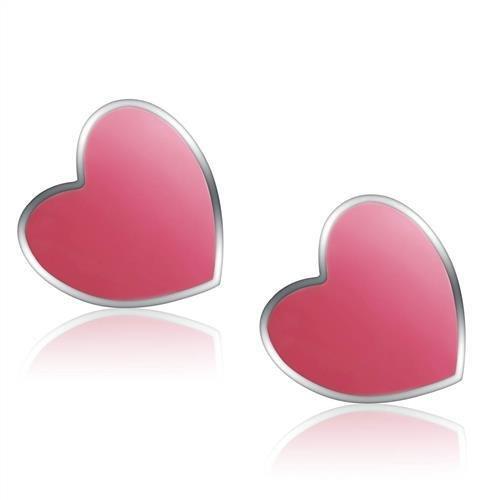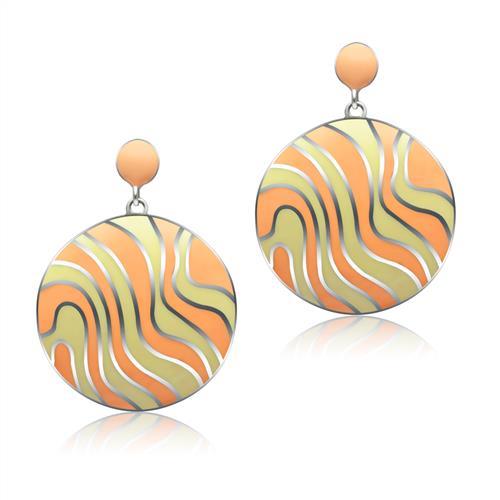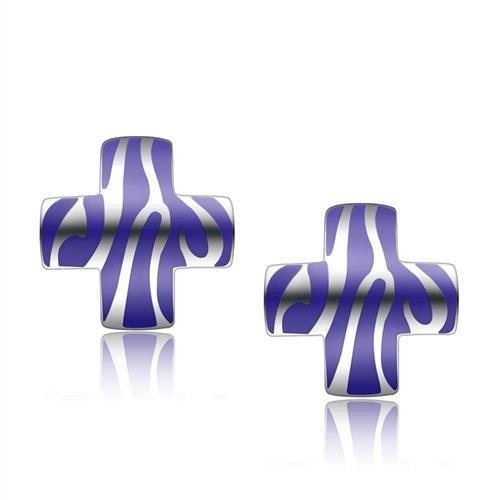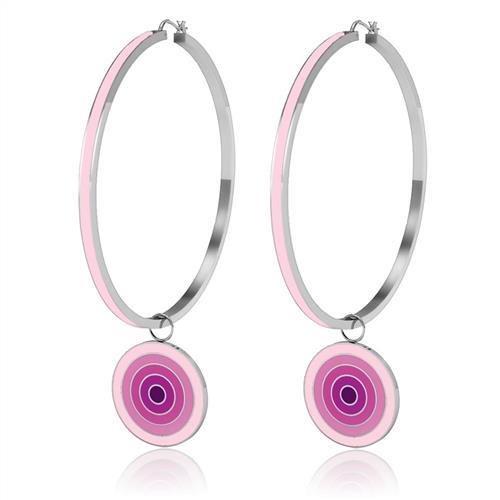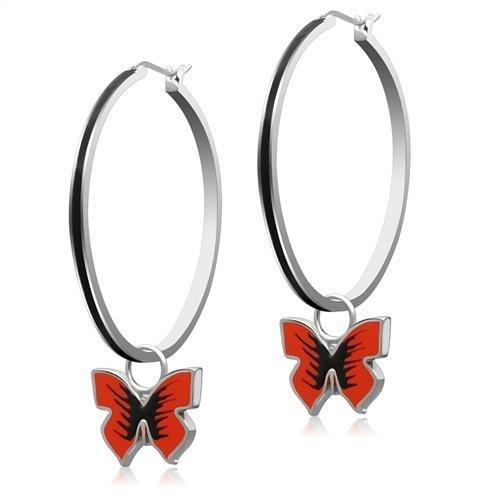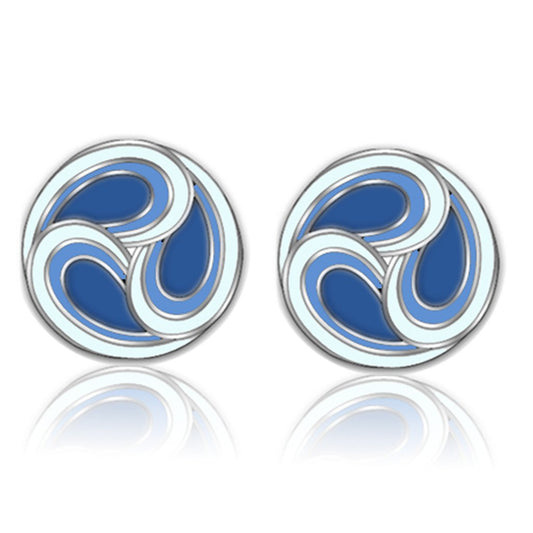So, what exactly is hypoallergenic jewelry? It’s a term you’ve probably heard, but the meaning can be a little fuzzy. In simple terms, hypoallergenic jewelry is any accessory made from materials that are far less likely to cause an allergic reaction.
Think of it this way: much like hypoallergenic skincare, this jewelry has been thoughtfully crafted for sensitive individuals to minimize irritation. The primary goal is to avoid common metal allergens like nickel. This practical approach allows you to wear beautiful pieces comfortably and, most importantly, confidently, without the fear of a painful rash.
Uncovering Hypoallergenic Jewelry
Have you ever put on a new pair of earrings, only to find your earlobes red, itchy, and swollen just a few hours later? That uncomfortable reaction has a name: contact dermatitis. And when it comes to jewelry, the most common troublemaker is a metal called nickel.
It’s hiding in plain sight. Many affordable—and even some surprisingly high-end—jewelry pieces use nickel as an alloy to add durability and shine. The problem is, for an estimated 10-20% of the population, any contact with this metal triggers a frustrating immune response.
Hypoallergenic jewelry is the solution. It relies on purer metals or specific alloys known to be gentle on the skin. The main goal is to sidestep common irritants like nickel, cobalt, and lead, which are notorious for causing those painful reactions.
This means you no longer have to choose between style and comfort. If you want to dive deeper into the main offender, you can learn more about what nickel-free jewelry is and why it's a total game-changer for sensitive skin.
Ultimately, choosing hypoallergenic pieces means you can finally build a collection you truly love without dreading the painful aftermath. It’s all about making informed, skin-friendly choices.
What’s Actually Happening When Jewelry Irritates Your Skin?
That frustrating red rash from a new pair of earrings isn't just in your head—it's a real, measurable immune response from your body. The science behind most jewelry allergies boils down to one primary culprit: nickel. A lot of everyday jewelry, especially costume pieces and lower-karat gold or silver, uses nickel in its metal mix (called an alloy) to add durability and shine.
When you wear that piece, the combination of your sweat and natural skin oils causes microscopic metal ions to break away from the jewelry and absorb into your skin. If you have a sensitivity, your immune system flags these ions as a threat and launches a defensive reaction. The result is a classic case of allergic contact dermatitis, which is the technical term for the itching, redness, and swelling you're all too familiar with.
Think of it as a microscopic overreaction. Your body is trying to protect you from something harmless.
The Metals That Cause the Most Trouble
This is where the term "hypoallergenic" comes in. It simply refers to jewelry made from materials that are far less likely to provoke that immune response. And with an estimated 10-20% of people worldwide having a nickel sensitivity, it's a bigger deal than most realize.
This quick infographic really puts the problem metals into perspective.
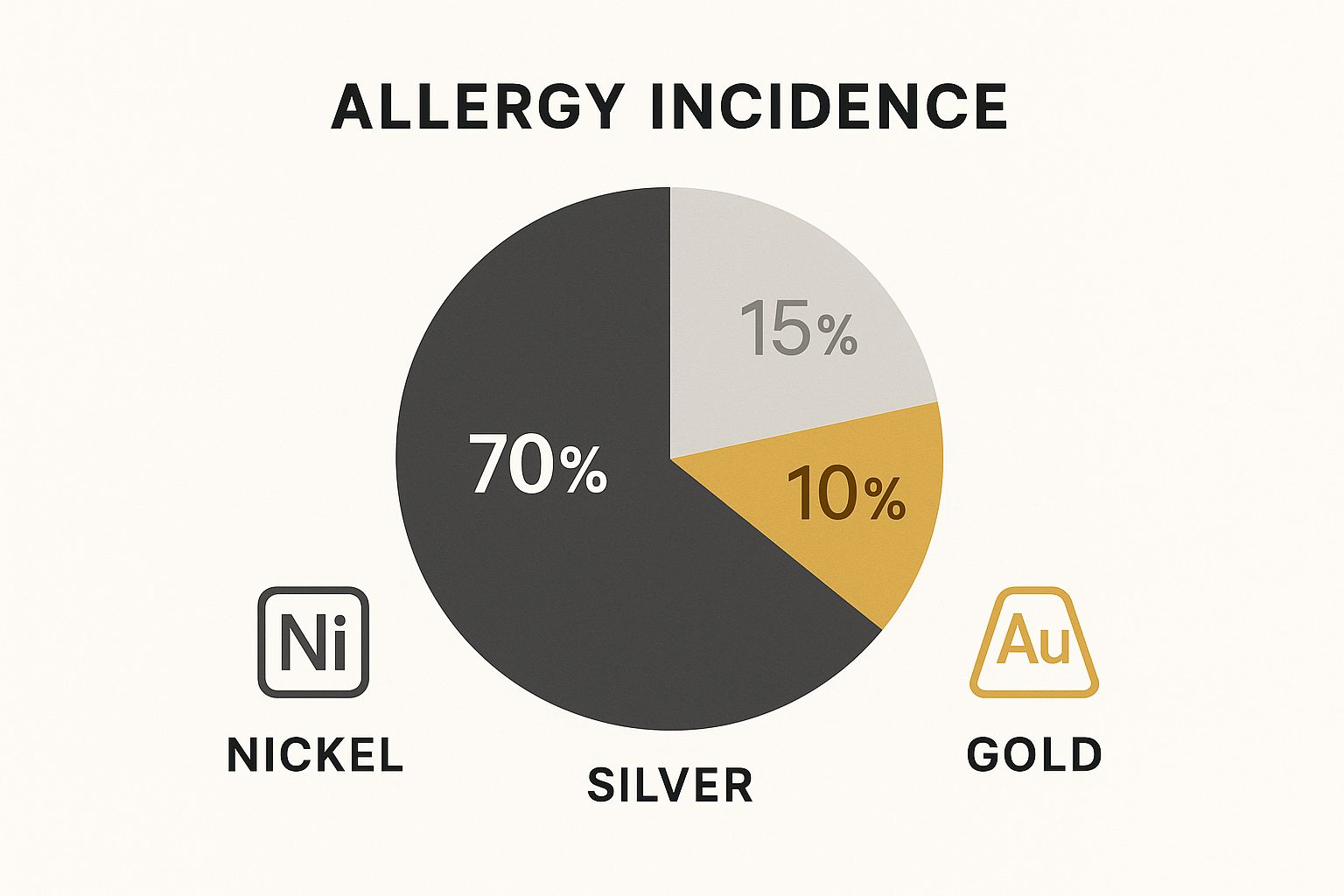
As you can see, nickel is, by a huge margin, the most common irritant when compared to silver and gold.
The key thing to remember is that your skin isn't allergic to the necklace or ring itself. It’s reacting to the specific metal ions—usually nickel—leaching out of it. Once you grasp that, you can start pinpointing the real problem and find pieces that won't betray you.
Of course, jewelry is just one piece of the puzzle for those with delicate complexions. If you're managing sensitive skin in general, it's wise to understand all potential irritants, including those in skincare treatments. For a deeper dive on that topic, you can check out this ultimate guide to chemical peels for sensitive skin. By identifying what triggers your skin, you can finally make smart, comfortable, and stylish choices.
The Best Jewelry Metals for Sensitive Skin
Okay, so we've covered the metals you'll want to avoid. Now for the fun part: let's talk about the safe, stylish materials you can finally embrace with confidence. Choosing the right metal is the most critical step in building a jewelry collection that feels as good as it looks.
Think of these metals as the A-listers of the jewelry world—they’re pure, stable, and incredibly unlikely to crash the party by causing a reaction. Getting to know what makes each one special will help you pick the perfect pieces for your skin, style, and lifestyle.
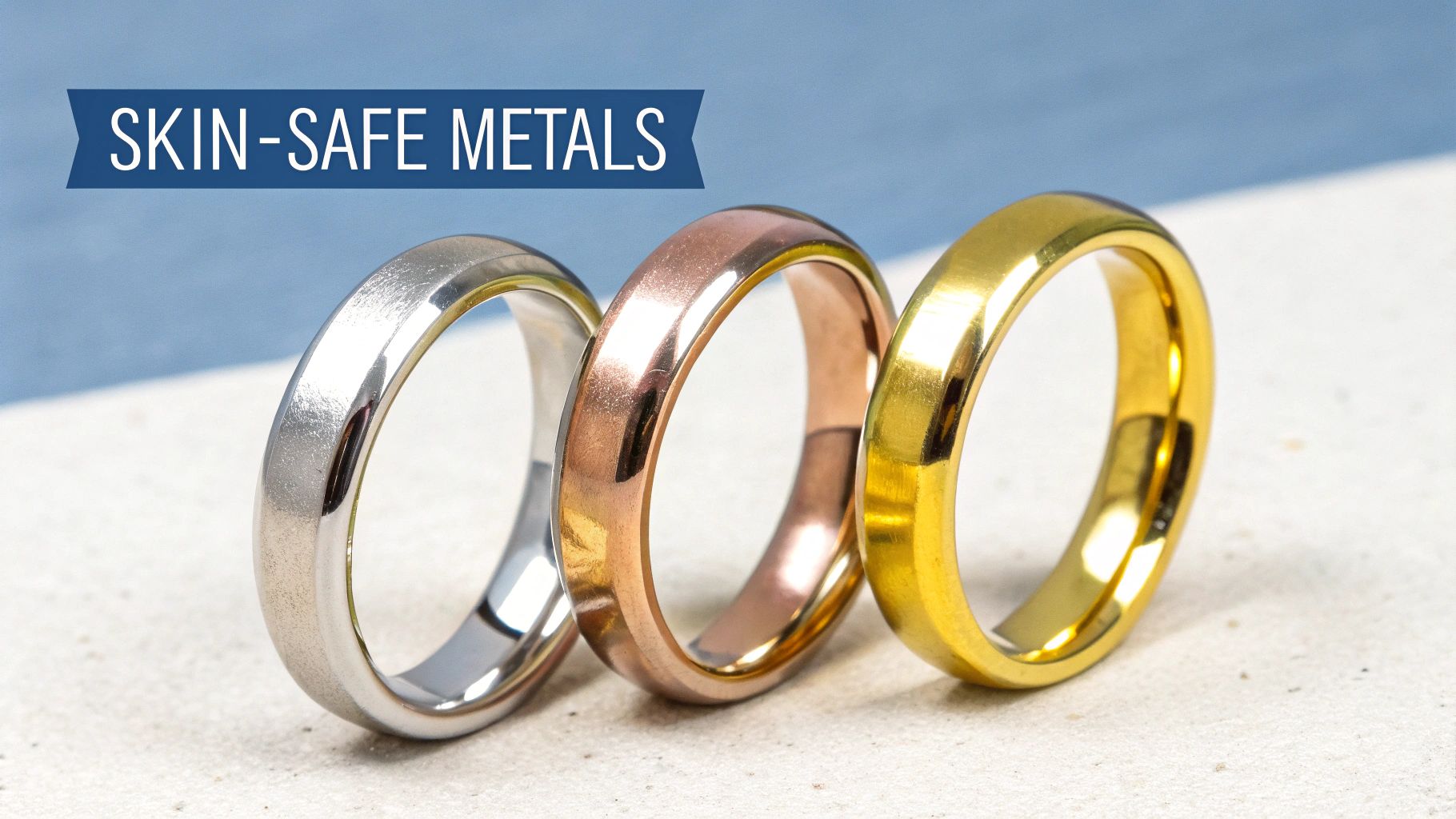
Top-Tier Metals for Ultimate Comfort
When it comes to hypoallergenic jewelry, a few key players stand out for their biocompatibility. In simple terms, this just means your body doesn’t see them as a threat, which helps you sidestep that dreaded allergic reaction.
Here are the top contenders:
- Titanium: This one's a true champion for sensitive skin. It’s 100% nickel-free, so lightweight you'll barely feel it, and tough enough for daily wear without tarnishing. It's an excellent choice for everything from minimalist studs to statement necklaces.
- Niobium: A close cousin to titanium, niobium is another pure, biocompatible element. It's a go-to for earrings and body jewelry because it's completely inert and can be anodized to create a rainbow of vibrant, permanent colors.
- Platinum: Famous for its rarity and stunning white luster, platinum is naturally hypoallergenic. Its dense and pure formula means there’s no nickel in the mix, making it a fantastic choice for wedding bands and other forever pieces.
- Surgical-Grade Stainless Steel: Look for grades like 316L, which are designed for medical implants. While they contain a tiny, tightly-bound amount of nickel, it's almost never released, making it safe for most people with sensitivities.
What About Gold Jewelry?
This is a common question, and it’s a good one. Pure gold itself is hypoallergenic, but 24k gold is just too soft for most jewelry. To give it the strength it needs, it's mixed with other metals to create an alloy—and that’s where things can get tricky.
The secret is choosing higher-karat options to minimize exposure to potential irritants.
For sensitive skin, 18k gold is an excellent choice. It’s made of 75% pure gold, and the other 25% is usually a mix of safer metals like copper and silver. This drastically cuts the risk of a reaction compared to 10k or 14k gold, which often contain nickel.
To make things even easier, here’s a quick-reference table comparing the top hypoallergenic metals.
Comparing the Best Hypoallergenic Jewelry Metals
This table is a quick reference guide comparing the key features of the safest metals for sensitive skin, helping you choose the best option for your needs and budget.
| Metal Type | Key Benefit | Best For | Price Point |
|---|---|---|---|
| Platinum | Naturally pure and durable | Wedding bands, engagement rings | High-End |
| Titanium | 100% nickel-free and lightweight | Everyday wear, body jewelry | Mid-Range |
| Niobium | Biocompatible and versatile in color | Earrings and those with extreme sensitivities | Mid-Range |
| 18k Gold | Classic look with low allergen risk | Fine jewelry, special occasion pieces | High |
| Surgical Steel (316L) | Affordable and corrosion-resistant | Fashion jewelry, watches | Affordable |
Ultimately, the best metal comes down to your personal sensitivity level, aesthetic, and how you plan to wear the piece.
It's no surprise that hypoallergenic jewelry often features alternative metals like titanium—a market forecasted to grow at nearly 9% CAGR till 2025—and surgical steel, which don't release the allergens found in traditional alloys. Even innovations like 3D printing of platinum and titanium jewelry are expanding the options available to us.
While we're focused on jewelry, the core idea of choosing hypoallergenic materials for sensitive skin is a principle that applies to many different products. For an even more detailed comparison, check out our guide on the best metals for jewelry.
At Precious Pulse Jewelry, our collections are built around these premium, skin-safe materials, so you never have to choose between style and peace of mind.
How to Shop for Hypoallergenic Jewelry with Confidence
Ready to finally build a jewelry collection you can actually wear without a second thought? Navigating the world of hypoallergenic pieces is way easier than it seems once you know what to look for. The most important thing to remember is that the term "hypoallergenic" isn't officially regulated, which means your best defense is always going to be knowledge.

So, instead of just trusting a generic label, your real focus should be on the specific material the piece is made from. Understanding the metal is everything.
Become a Savvy Shopper
When you’re browsing, don't ever be afraid to ask direct questions. Any reputable jeweler will be completely transparent about their materials. At Precious Pulse Jewelry, for instance, we make it a point to clearly disclose the composition of our pieces so you can shop with total peace of mind.
Here are a few practical tips to keep in your back pocket for your next shopping trip:
- Look for Specific Labels: Scan the product descriptions for phrases like “nickel-free,” “surgical-grade stainless steel,” or “titanium.” These are far more reliable clues than the vague term “hypoallergenic.”
- Ask the Right Questions: Get straight to the point with the seller. Ask, “What is this piece actually made of?” or “Can you confirm this alloy is completely nickel-free?” Their confidence and clarity in answering will tell you a lot.
- Prioritize High-Purity Metals: When it comes to gold, higher-karat options are always a safer bet for sensitive skin. To understand exactly why, you can explore our detailed guide to hypoallergenic gold jewelry.
For those with extreme sensitivities, a simple patch test can be your final safeguard. Before committing to a full day, try wearing a new piece on a less visible area, like the inside of your wrist, for a few hours to see how your skin reacts.
By becoming an educated buyer, you empower yourself to pick out jewelry that isn’t just beautiful, but also a safe, comfortable, and lasting part of your personal style.
Caring for Your Skin-Friendly Jewelry Collection
So you’ve found the perfect hypoallergenic pieces that let you sparkle without the irritation. That’s step one. But the real secret to keeping your jewelry beautiful and—more importantly—skin-friendly for the long haul is proper care.
Even the safest metals can cause a reaction if they aren’t kept clean. A slow buildup of dirt, lotions, and natural skin oils can create a film on your favorite earrings or necklace. That film can trap bacteria and irritate sensitive skin, defeating the whole purpose of choosing hypoallergenic jewelry in the first place.
Thankfully, a little maintenance goes a long way. Keeping your accessories clean is simple, and it protects both your skin and your investment.
Simple Cleaning Tips for Your Favorite Metals
You don’t need harsh chemicals or complicated routines. Each metal just needs a gentle touch now and then to restore its brilliance and keep it comfortable to wear.
Here are a few quick, material-specific cleaning methods:
- Titanium & Niobium: These are the champions of low-maintenance style. Just wash them with warm water and a mild, fragrance-free soap. Pat them dry with a soft cloth, and you’re done.
- Platinum & High-Karat Gold: To keep their iconic luster, give these pieces a quick soak in a bowl of warm water with a few drops of gentle dish soap. You can use a soft-bristled brush (like a baby toothbrush) to gently scrub away any residue before rinsing clean and patting dry.
- Surgical Stainless Steel: This durable metal can be cleaned just like gold and platinum. A simple bath in soapy water is usually enough to remove any buildup and restore its shine.
Remember, a clean piece of jewelry is a happy piece of jewelry. Consistent cleaning not only prevents skin irritation but also preserves the integrity and beauty of your collection, making responsible ownership feel effortless.
By following these easy tips, your favorite hypoallergenic pieces from Precious Pulse Jewelry will continue to bring you comfort and style for years to come.
Still Have Questions? Let's Clear Things Up
As you dive into the world of hypoallergenic jewelry, a few common questions always seem to pop up. Getting straight answers is the key to choosing pieces you can wear with confidence and comfort. Let's tackle some of the biggest ones.
Is Sterling Silver Truly Hypoallergenic?
This is a classic point of confusion, and for good reason. Pure silver itself is safe, but sterling silver is an alloy, meaning it's mixed with other metals for strength. By definition, it's made of 92.5% pure silver, while the other 7.5% is usually copper, which is generally safe.
The trouble starts when that other 7.5% includes nickel. While traditional sterling silver uses copper, some manufacturers may add nickel for durability. To stay on the safe side, always look for pieces explicitly marked as “nickel-free sterling silver.”
Can You Be Allergic to Real Gold Jewelry?
A true allergy to pure gold is incredibly rare. When someone has a reaction to a gold piece, they’re almost always reacting to the other metals—usually nickel, copper, or zinc—that have been mixed in to make the gold stronger.
The fix is simple: opt for higher-purity gold like 18-karat or higher. This dramatically cuts down your exposure to those other metals and keeps the risk of irritation to an absolute minimum.
The demand for skin-safe jewelry isn't just a niche trend—it's exploding. Nickel allergy, the most common culprit, affects a staggering 17% of women and 3% of men worldwide. This has pushed the global hypoallergenic earrings market to an estimated USD 1.32 billion in 2024, and it's only expected to grow as more people learn what's causing their irritation. You can dive deeper into these hypoallergenic market trends to see where the industry is headed.
What Does "Surgical Steel" Actually Mean?
Surgical steel isn't just a marketing term—it's a specific type of stainless steel, usually grade 316L. This grade is prized for its extremely low nickel content and its incredible resistance to corrosion.
Its chemical makeup is what experts call "biocompatible," which is a technical way of saying your body is highly unlikely to have a negative reaction to it. It’s the same reason this metal is trusted for medical implants and surgical tools—it's designed to live in harmony with the human body, making it a reliable and affordable choice for everyday jewelry.
Ready to build a collection you'll love without the worry? Explore the stunning, skin-friendly pieces at Precious Pulse Jewelry and find your perfect match today. Discover our full range of hypoallergenic options at https://preciouspulsejewelry.com.

